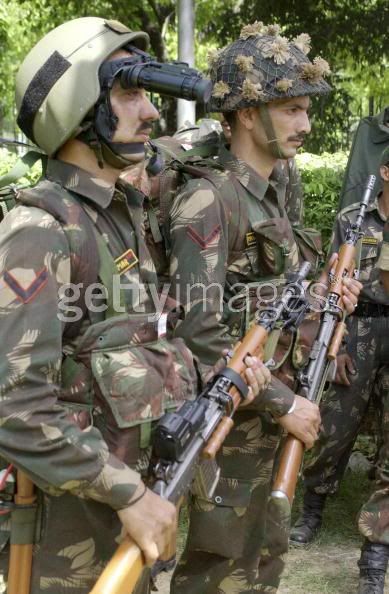Indian soldier of the future. - slight correction
I got the numbers wrong, there are at least 16 different future soldier programmes in play. This is the agenda for the annual conference.
Soldier Technology 2004, 21st - 23rd June 2004, Brussels, Belgium
31 Leading Soldier Modernisation Experts representing 16 Soldier Modernisation Programmes have elected to join the speaker faculty at Soldier Technology 2004, the latest of which is:
John Hutchings, Project Manager, Land 125 (WUNDURRA), DSTO, Australia
With the most comprehensive line-up of International Soldier Modernisation Programmes in the world this year, you cannot afford to miss out this unique opportunity to get the complete update on individual soldier systems within the world's leading military forces.
Leading speakers include:
Lieutenant Colonel Koos Meijer, Deputy Chair, NATO T/G 1 *
Lieutenant Colonel Andrew MacNaughton, Programme Manager, FIST, DCC IPT, DEFENCE PROCUREMENT AGENCY *
William Ullern-Manguin, Coherence Architect, DGA, FRANCE *
Major Marten Dankert, Project Officer, IDZ, GERMANY ARMY *
Lieutenant Colonel Dave Gallop, Product Manager, LAND WARRIOR, US ARMY *
Rune Lausund, Chief Scientist, FFI, NORWAY *
Lieutenant Colonel Giovanni Cappai, Manager, Combatente Futura, ITALY *
Lieutenant Colonel Mike Bodner, Section Head, Dismounted Close Combat, CANADIAN DEFENCE FORCES *
Dr Pieter Nel, Program Manager, AFRICAN WARRIOR, ARMSCOR *
Marten Lindgren, Project Manager, MARKUS, FMV *
Lieutenant Colonel Rick Adams, Project Officer, USMC Rifle Squad, USMC *
Major Jan Coupe, ProBEST, BELGIAN ARMY *
Lieutenant Colonel Henk Wendrich, Deputy Programme Manager, D2S2, RNLA *
Major John Bjergeggard, Project Manager, DANISH SMP, DANISH ARMY COMBAT SCHOOL *
Colonel Simon Deakin, IPT Leader Dismounted Close Combat, DEFENCE *
Lieutenant Colonel Jacques Levesque, Project Manager, Clothe The Soldier, (CTS), Program Management (DSSPM), CANADIAN NATIONAL DEFENCE HEADQUARTERS *
Now in its 4th successful year, Soldier Technology attracts over 220 delegates from across the world.
Once again, this year, the conference will focus on all the leading-edge information on soldier modernisation issues, programmes and technologies, including: INTEROPERABILITY, SUSTAINABILITY, SURVIVABILITY, LETHALITY, HUMAN FACTORS, TRAINING, MOUT, POWER MANAGEMENT, PROJECT MANAGEMENT, TESTING AND ASSESSMENT.

